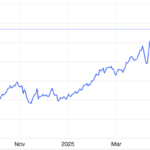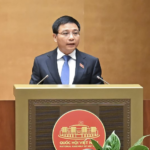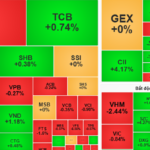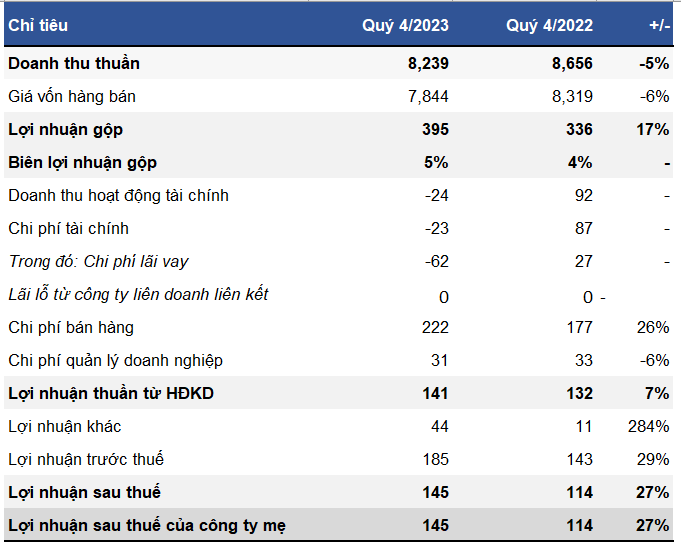Gold prices dropped significantly this morning, June 24th, after former US President Donald Trump announced that Israel and Iran had agreed to a ceasefire, which he stated would last “forever.” The reduction in risk aversion also caused the US dollar to slip, reversing its gains as a safe-haven asset in recent days.
At 8:46 am Vietnam time, the spot gold price in the Asian market fell by $25.3/oz compared to Monday’s close in the US, equivalent to a 0.75% decrease, to $3,344.7/oz, according to Kitco exchange data. Converted at Vietcombank’s selling rate, this price is equivalent to about VND 106 million/lượng, down VND 300,000/lượng from yesterday morning.
At the same time, Vietcombank quoted the USD at VND 25,980 (buying) and VND 26,310 (selling), up VND 91 and VND 31, respectively, compared to the previous day’s opening.
On Monday, in New York, the spot gold price closed at $3,370/oz, up $0.9/oz from the previous week’s close.
The downward pressure on gold is increasing as the geopolitical tensions in the Middle East are showing positive signs of easing.
Iran’s armed forces announced on Monday that they had attacked a US base in Qatar after the US carried out airstrikes on Tehran’s nuclear facilities in Fordo, Isfahan, and Natanz over the weekend. However, Iran’s retaliatory attack was intercepted by Qatar, and no casualties were reported.
In a post on Social Truth, Trump thanked Iran for “giving us early warning” about the attack on the Qatar base, which “helped avoid casualties.” He also called for peace with Iran and stated that he would encourage Israel to do the same.
After the market closed, Trump announced a ceasefire schedule, stating that it would end the conflict between Israel and Iran. “Assuming everything will go as planned, which it should, I congratulate both countries, Israel and Iran, on their toughness, courage, and wisdom to end the 12-day war,” Trump wrote on Truth Social.
In an interview with NBC News on Monday evening local time, Trump said the ceasefire agreement between Israel and Iran would last “forever.”
However, Iran’s Foreign Minister, Seyed Abbas Araghchi, quickly denied Trump’s statements. In a post on Social X, Araghchi said, “There is currently no ceasefire or any retreat in the military campaign.”
Nevertheless, the signs of de-escalation in the Middle East geopolitical crisis have boosted investors’ risk appetite and reduced the demand for safe-haven assets. US stock markets rose nearly 1% on Monday, while oil prices plunged 7%.
Along with gold, another safe-haven asset, the US dollar, is also weakening. The Dollar Index, which measures the strength of the US dollar, closed Monday at 98.42, down from 98.77 in the previous session. The index continued to fall in the morning, dropping to 98.25 at times. Last week, the Dollar Index rose 0.6% as many investors bought the dollar as a safe haven.
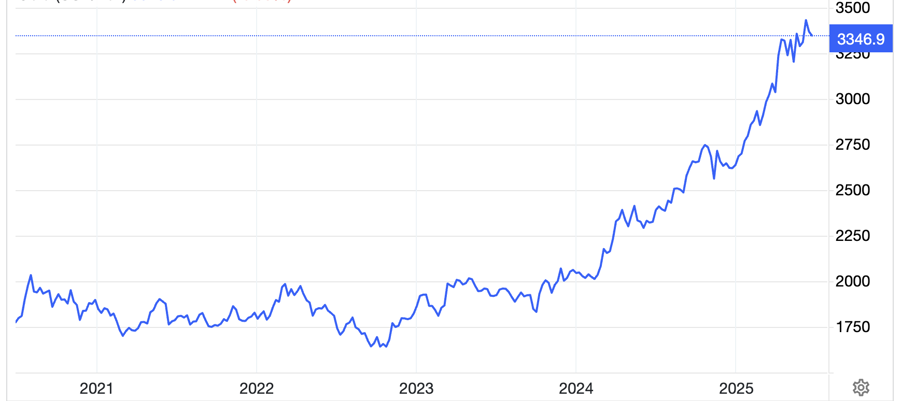
However, the world’s largest gold ETF, SPDR Gold Trust, bought a net of 7.2 tons of gold on Monday, increasing its holdings to 957.4 tons. In the previous week, the fund purchased a net of about 10 tons of gold, marking the fourth consecutive week of net purchases.
According to Kitco News, some analysts say that the safe-haven demand for gold is being limited as the conflict between Israel and Iran is essentially being contained. However, a report by UBS emphasizes that gold’s strength lies not in its role as a geopolitical event hedge but mainly in its larger function as a portfolio diversifier.
“Investors may benefit from thinking about gold from a portfolio diversification perspective rather than a volatility-driven trade,” said UBS’s Julian Wee in the report. Citing data from the World Gold Council (WGC), Mr. Wee emphasized that portfolio managers view gold as a multi-faceted asset. According to a WGC survey, the top three reasons for portfolio managers to hold gold are its performance during times of high uncertainty, its portfolio diversification role, and its value storage function.
“The current geopolitical strategy supports all of these factors, albeit to varying degrees. The unpredictable policy-making of the Trump administration, a factor contributing to the erosion of trust, could remain a key driver for gold prices in the near term. Investors should note the ongoing selling of the US dollar and gold’s potential role in this transition,” Mr. Wee wrote in the report.
Despite gold’s current trading range-bound pattern, UBS remains optimistic about gold’s price outlook, maintaining its forecast that gold prices will reach $3,800/oz.
“We expect central bank and ETF gold demand to remain robust going forward. Gold also serves as a highly liquid and politically neutral store of value, which can substitute for the US dollar,” the expert commented.
President Trump Unveils Gold-Plated Phone
Despite Trump Mobile’s bold claims of manufacturing smartphones in the US, they have yet to elucidate how they will achieve this feat in the absence of a substantial domestic production infrastructure.


























